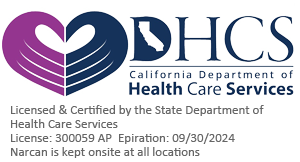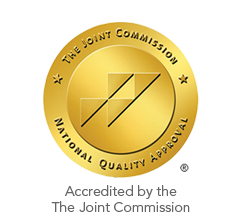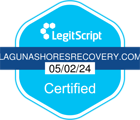Chronic consumption of alcohol can lead to various forms of alcohol-related psychoses. In certain instances, individuals may experience a persistent state characterized by suspiciousness or more severe paranoid delusions. This condition is known as alcoholic paranoia or alcohol-induced psychotic disorder.
In this article, we will delve into the nature of alcohol hallucinations, how they differ from other alcohol-related conditions, and the strategies for their prevention and treatment.
What is Alcoholic Hallucinosis?
Alcoholic hallucinosis also known as alcohol hallucinations is defined by the presence of vivid visual, auditory, or tactile hallucinations experienced by individuals with chronic alcohol use disorder. Typically, these hallucinations manifest as third-person auditory experiences, which are often derogatory or commanding in nature, occurring while the individual remains fully conscious. They may present as snippets of conversation or musical fragments, and can be accompanied by secondary delusions or perseveration.
This condition is distinct from other alcohol-related mental health disorders and is characterized by sensory perceptions that are not grounded in reality. These hallucinations can be frightening, confusing, and even dangerous, especially if misunderstood or left untreated. The distress caused by these symptoms can be significant, potentially leading to violent suicidal behavior. Individuals experiencing such intense episodes may benefit from an anxiety attack test to better understand the severity of their emotional responses. The onset of alcoholic hallucinosis is frequently linked to a decrease in alcohol consumption or the onset of withdrawal symptoms, necessitating a distinction from delirium tremens, despite the possibility of hallucinations persisting from that state. It is also important to note that these symptoms can emerge in individuals who are currently consuming alcohol.
Alcoholic hallucinosis is significantly less prevalent than delirium resulting from alcohol withdrawal; however, it presents with more unusual characteristics. Typically, the onset occurs within 48 hours following the cessation of alcohol consumption, although it may also manifest during active drinking or even weeks later. Patients often report vivid auditory illusions and hallucinations while maintaining a clear state of awareness. These hallucinations may take on accusatory and menacing tones. Recognizing the signs, symptoms, risk factors, and available treatment options for alcoholic hallucinosis is essential for effective management and care.
Signs and Symptoms of Alcoholic Hallucinosis
Alcohol hallucinations are typically associated with individuals who have been consuming large amounts of alcohol over a long period. The symptoms of alcoholic hallucinosis can vary in intensity, but common features include:
People with alcohol hallucinosis often experience vivid, often disturbing, visual hallucinations. Common visual hallucinations may include:
- Seeing shadows or figures that do not exist
- Perceptions of movement or change in the environment
- Illusions that objects are larger or smaller than they really are
Seeing faces or other disturbing images
Auditory hallucinations are hearing voices, sounds, or noises that are not present in the environment. For example:
- Hearing voices talking or shouting, often in a critical or threatening tone
- Hearing sounds that have no source, such as footsteps or whispers
- Experiencing distorted sounds that seem more intense or unclear than usual
Some people with alcoholic hallucinosis experience tactile hallucinations, which involve sensations of touch or movement that do not have a physical basis. These may include:
- Feeling insects crawling on the skin (a phenomenon known as “formication”)
- Experiencing an itching or burning sensation without any apparent cause
- Feeling a sense of heaviness or pressure on the body
In addition to sensory hallucinations, alcohol hallucinosis may also affect a person’s cognitive functions. Common psychological symptoms include:
- Anxiety and agitation
- Paranoia and confusion
- Delusions or a distorted sense of reality
- Irrational fears and emotional instability

These symptoms can make it difficult for individuals with alcohol hallucinosis to distinguish between reality and the hallucinations they are experiencing. The severity of these symptoms can fluctuate and may worsen during periods of heavy drinking or withdrawal.
Therefore, a thorough assessment for other psychotic symptoms is essential to rule out alternative functional and organic disorders, particularly Wernicke encephalopathy. While visual hallucinations are not common, they may still occur. The overall prognosis tends to be favorable, especially among individuals who abstain from alcohol; however, in approximately 10–20% of cases, hallucinations may persist for over six months.
Resuming alcohol consumption often leads to a resurgence of symptoms. In some instances, hospitalization and treatment with antipsychotic medications may be necessary. Furthermore, about 5–20% of individuals may go on to develop schizophrenia, with a noted increase in family history of psychotic disorders.
Risk Factors for Alcohol Hallucinosis
Alcoholic hallucinosis is not an inevitable consequence of chronic alcohol use, but certain factors can increase the likelihood of developing the condition. These risk factors include:
The most significant risk factor for alcohol hallucinosis is prolonged alcohol use. Chronic drinking leads to changes in brain chemistry and function, which can contribute to the development of hallucinations. The risk increases the longer an individual has been drinking heavily.
Individuals with a history of alcohol withdrawal are at an increased risk of experiencing alcohol hallucinosis. The brain becomes hypersensitive during withdrawal, which can trigger hallucinations. This is why hallucinosis is often seen in people who are either undergoing or recovering from alcohol withdrawal.
People with a history of mental health conditions, such as schizophrenia, depression, or anxiety disorders, may be more vulnerable to developing alcoholic hallucinosis. Alcohol can exacerbate underlying psychological issues, leading to hallucinations and other symptoms.
The use of other substances, such as drugs or medications that affect the central nervous system, can increase the risk of hallucinations in individuals with alcohol dependence. Certain substances can heighten the effects of alcohol and contribute to a higher likelihood of hallucinosis.
While alcohol hallucinosis can affect individuals of all ages, it is more common among older adults who have a long history of alcohol use. Additionally, men tend to be more likely to experience alcohol-related hallucinations, although women are certainly not immune.
Alcohol Hallucinosis vs. Alcohol Psychosis
It is important to differentiate between alcohol hallucinosis and alcohol psychosis, as these two conditions, while related, are distinct in terms of symptoms and clinical presentation.
Alcohol Hallucinosis
- Key Features: Primarily characterized by hallucinations (visual, auditory, or tactile) without significant impairment in reality testing or cognition.
- Cognitive Function: People with alcoholic hallucinosis generally maintain a clearer sense of reality, despite their hallucinations.
- Onset: Hallucinosis typically occurs in individuals who have been drinking heavily for a long time or during alcohol withdrawal.
Alcohol Psychosis
- Key Features: Alcohol psychosis involves both hallucinations and delusions, which are more persistent and debilitating. Individuals may have distorted thoughts and beliefs that do not align with reality, often leading to a complete break from reality.
- Cognitive Function: Alcohol psychosis can impair cognitive function, leading to significant confusion, disorientation, and difficulty distinguishing between real and imagined experiences.
- Onset: Alcohol psychosis can occur during acute alcohol intoxication, withdrawal, or following long-term alcohol abuse. It may also persist after the individual has stopped drinking.
The key difference is that alcohol psychosis involves more profound cognitive disruptions and delusions, whereas alcoholic hallucinosis is primarily a sensory experience without the same level of cognitive impairment.
Alcohol Hallucinosis vs. Delirium Tremens (DTs)
Delirium tremens (DTs) is another severe alcohol-related condition that is often confused with alcoholic hallucinosis. While both conditions involve hallucinations, they differ in several important ways.
Delirium Tremens (DTs)
- Key Features: DTs are a life-threatening condition associated with alcohol withdrawal. Symptoms include confusion, agitation, fever, seizures, and hallucinations (visual, auditory, or tactile).
- Onset: DTs typically occur within 48 to 72 hours after an individual stops drinking or significantly reduces alcohol consumption after a period of heavy drinking. The severity of symptoms can escalate rapidly and requires immediate medical intervention.
- Cognitive Function: People with DTs often experience profound confusion and disorientation. The hallucinations in DTs are usually accompanied by other symptoms such as tremors, fever, and changes in heart rate or blood pressure.
Alcoholic Hallucinosis
- Key Features: Alcohol hallucinosis is primarily characterized by hallucinations without the severe confusion, fever, or other systemic symptoms seen in DTs.
- Onset: Alcohol hallucinosis may occur after prolonged alcohol use or during withdrawal but is not associated with the sudden and intense withdrawal that characterizes DTs.
- Cognitive Function: Individuals with alcoholic hallucinosis maintain a higher level of cognitive function and generally do not experience the profound confusion seen in DTs.
While both conditions involve hallucinations, delirium tremens is a much more serious and acute disorder that requires immediate medical intervention, while alcoholic hallucinosis is less severe in comparison, although still requiring appropriate treatment and management.
Diagnosis and Treatment of Alcohol Hallucinations
Diagnosis of Alcohol Hallucinations
Diagnosing alcohol hallucinosis involves a detailed medical history, physical exam, psychiatric evaluation, and lab tests to rule out other causes. Key steps include:
- Medical History: Reviewing alcohol consumption and withdrawal history.
- Psychiatric Evaluation: Assessing the nature and frequency of hallucinations.
- Physical Examination and Lab Tests: Checking for other conditions that may cause similar symptoms (e.g., liver disease, infections).
- Screening for Co-occurring Disorders: Identifying any underlying mental health conditions, like anxiety or depression, that may influence treatment.
Treatment of Alcohol Hallucinations
Treatment focuses on managing alcohol withdrawal, addressing hallucinations, and supporting long-term recovery:
- Medical detoxification and Withdrawal Management: Medically supervised detox with medications like benzodiazepines to manage withdrawal symptoms and prevent complications.
- Medications for Hallucinations: Antipsychotics (e.g., haloperidol) and antidepressants (e.g., SSRIs) may help manage hallucinations and co-occurring mood disorders.
- Psychotherapy: Cognitive-behavioral therapy (CBT) helps individuals address alcohol use and manage triggers, while group therapy provides support for long-term recovery.
- Long-Term Treatment: Residential treatment or outpatient rehab programs, medication-assisted treatment (MAT), and ongoing therapy are essential for maintaining sobriety and preventing relapse.
- Support Systems: Family, peer groups, and 12-step programs offer important emotional support throughout recovery.

Can Alcohol Hallucinosis Be Prevented?
Preventing alcohol hallucinosis largely centers around addressing the root cause: alcohol use disorder. The best preventive measures include:
Limiting alcohol intake and avoiding binge drinking can significantly reduce the risk of developing alcohol-related mental health conditions, including hallucinosis.
Seeking help early when signs of alcohol dependence appear can prevent the development of severe alcohol-related issues.
For those with alcohol dependence, gradually reducing alcohol intake under medical supervision can help prevent severe withdrawal symptoms, including hallucinosis.
Seek Help for Alcohol Addiction at Laguna Shores
If you or someone you know is struggling with alcohol use disorder and experiencing symptoms of alcohol hallucinosis, it’s important to seek professional help as soon as possible. Laguna Shores, a leading addiction recovery center, offers comprehensive treatment programs that can help individuals overcome alcohol dependence and its related mental health challenges.
By seeking treatment, you can begin the journey toward recovery and regain control of your life. Don’t wait—help is available, and recovery is possible. Contact us now!


 Matthew Beck B.A, M.A, LMFT
Matthew Beck B.A, M.A, LMFT 


